Stay Put: How to Maintain Your SEO Rankings After Reaching The Top?
Can you guess the subject that is the most written about in the internet marketing niche?
It’s probably building traffic to your web site. Just look at the number of search results on the subject.
I, myself have written many articles on marketing strategies that ultimately help you in getting more traffic. Some examples include guest posting, content distribution, social media marketing, link building and more.
It’s a cornerstone for any online business, right? You cannot execute other tactics, like conversion optimization, until you get at least 500-600 visitors/day (probably more) on your web site. It’ll be a total waste of time.
Download this how to guide to maintain your SEO ranking after reaching at the top of search engine rankings.
But, there’s one subject that’s rarely discussed in online marketing blogs:
Maintaining your search engine rankings once you’ve reached the top spot.
I can see the reason why. Google favors established brands and authoritative web sites in its results. But, it requires considerable effort to build your authority in the first place. It’s especially difficult for small businesses devoid of time, budget and resources.
Ascend2, in its SEO Summary report found that relevant content creation is the most effective search engine optimization tactic. Ironically, it was also rated as the most difficult to produce by marketers. Look at the chart below for exact numbers.
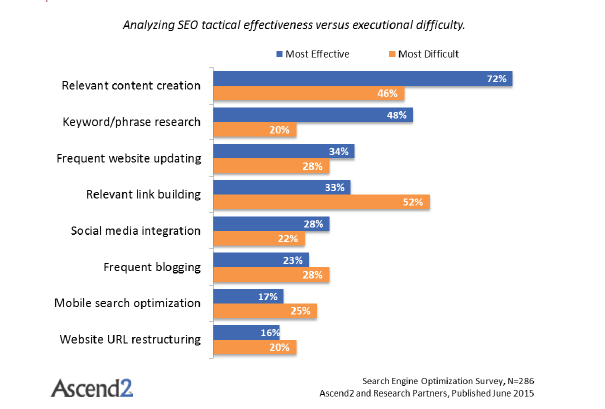
Forget small businesses. PJ Fusco reported that even cream of the crop Fortune 500 companies struggle with organic SEO. As per his analysis using the Covario SEO Audit Score™ system, here are the hurdles they face in search engine optimization implementation.

If you are struggling with search engine optimization, then hang out on this blog for a bit and read some of my previous posts, like SEO made simple, keyword phrase research, driving 20,000 visitors to your web site in 90 days and promoting your blog posts.
But, for a majority of you, I trust that you’re in a better position. You’ve integrated long-tail keyword phrases in your posts and started achieve search engine rankings on the first page for least a couple of terms.
So what next? Will you remain at the top spot for your target term forever, even during a web site redesign?
Nope.
Search engine traffic is pretty stable. If you don’t do anything fishy on your web site, Google won’t bring your search engnine rankings down.
But, search engine optimization is an ongoing process. You’ve got to keep track of your competition to ensure that the information on your pages isn’t dated.
Google loves its users and it likes to serve relevant, high-quality and updated content to them.
If you leave a high ranking webpage on its own, you’re essentially sending the wrong signal to your audience and Google.
With competition in the content marketing landscape turning fierce (just look around and you’ll see that every brand has become a publisher), you need to take special care of those first page webpages learningview herunterladen.
So, what are the tactics that you should follow to ensure that your high rankings stay safe (even during a web site upgrade)?
I’ve broken down the complete process for you in this article.
Are you ready to stay competitive and prevent your web site from a traffic crisis?
Let’s get started.
How to launch a revamped web site the right way? (Hint: 301 redirects are the most important ingredient)
Let’s start with the most common mistake that sends many high rankings and traffic tumbling:
Not setting up redirects properly when rebuilding the web site.
A typical example of a terrible new web site launch is visible in the analytics screenshot below.

Yep, you saw that right.
From 6,000 visitors/day to zero.
Ewww.
That would really hurt.
So, what are the common reasons that lead to such failures during web site redesign?
Here are 4 issues with tips to resolve them.
1. Not taking care of on-page SEO and finding those hidden key phrases opportunities.
During a relaunch, you need to take special care when optimizing your web site’s content. You need to look for opportunities to grow your traffic, including tweaking your page titles, adjusting your meta description and updating content.

Let me share a specific keyword phrase strategy I have used in the past at Quick Sprout. I used Google’s suggested long-tail keyword phrase recommendations for the head key phrases I was already ranking really well for.

I integrated these keyword phrases in my published posts every month.
The result?
I was able to increase Quick Sprout’s traffic from 120,365 visitors in Jan, 2013 to 174,496 visitors in Dec, 2013.

2. If you’re messing with your web site’s URL structure, then perfectly map out your 301 redirection plan
From the search engine optimization perspective, this is the most significant aspect of a web site relaunch.
If you have a large web site and you change your URL structure, then you’ll lose a lot of traffic from your inbound links to your individual pages. You need to ensure that all of your older pages 301 redirect to their newer counterparts.
This will ensure that you maintain your search equity, losing only 10-15% of your traffic (which is normal).
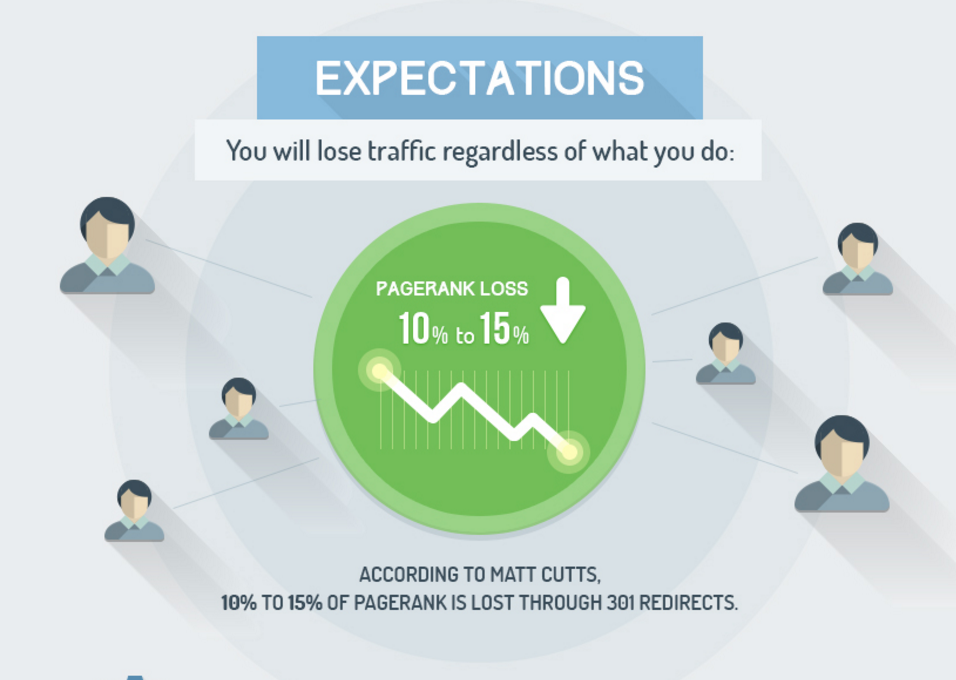
The best strategy for tackling this issue is to keep your URL structure the same as much as possible.
But, if you’re moving to a new CMS or had a bad URL structure, then here are 3 tips to create your 301 redirect mapping strategy for the rewritten URLs herunterladen.
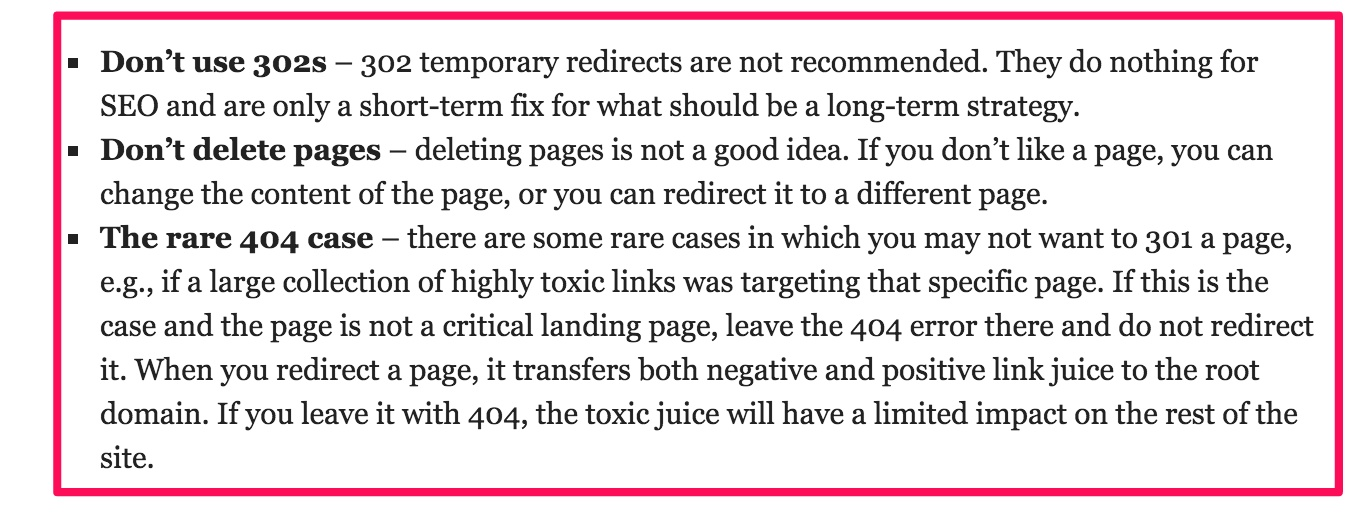
You can also read a detailed breakdown of the 301 redirect process at SEOpoint. John Romaine shows you the exact process using Excel, Screaming Frog, Text Mechanic, Yoast SEO and Notepad.

3. Craft a user-friendly 404 page to deal with the error spikes
After launching your updated site, you may notice sudden 404 error spikes in your analytics.

You can obviously note the pages and fix them. But, you also need to have an optimized error 404 page to ensure that the visitor stays on your web site.
I linked to 25-50 internal pages from the error 404 page at Techcrunch. The result was a 9% increase in web site traffic in 30 days.
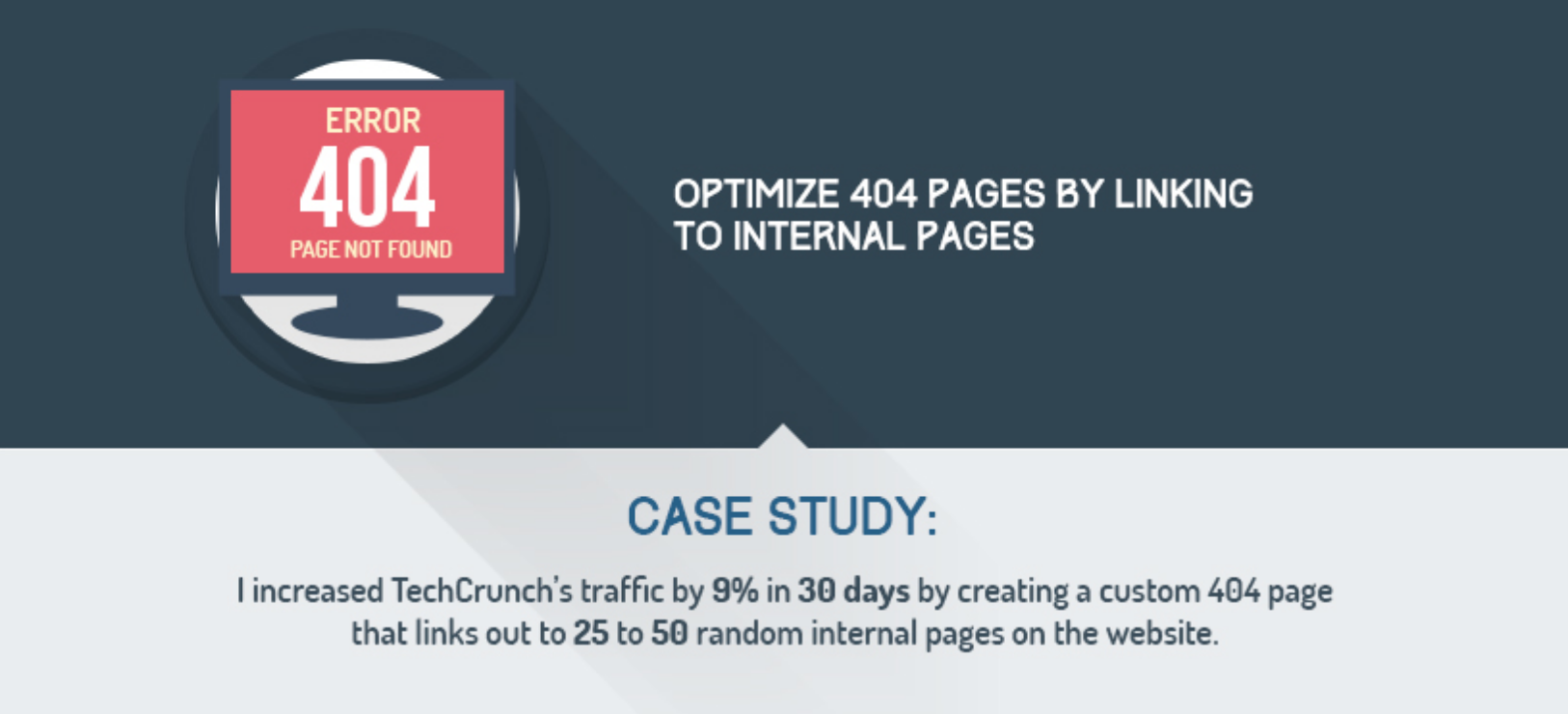
You can even place a contact form on your error 404 page like Ben Cook did during his client’s web site relaunch. The result was emails from visitors requesting information that didn’t make it to the new web site.
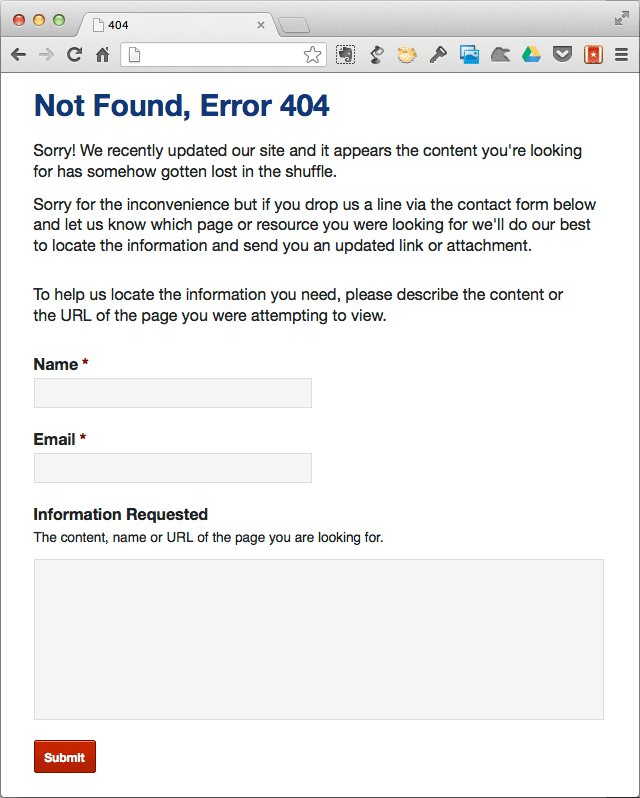
4. Serve the updated address of your content to search engines by resubmitting your XML sitemap
Google bots need help to index the new URL locations of your content. First, you need to check your robots.txt file and confirm that you’re allowing search engines to crawl your web site. You’ll also want to be sure that your full web site is getting indexed.

Next, setup the proper location of your sitemap from the txt file.
You can submit your sitemap by navigating to:
Webmaster Tools > Crawl > Sitemaps
If you want to further help search engines with indexing and txt files, you can also use multiple XML sitemaps.
Razoo experienced an increase in organic traffic after implementing multiple sitemaps.
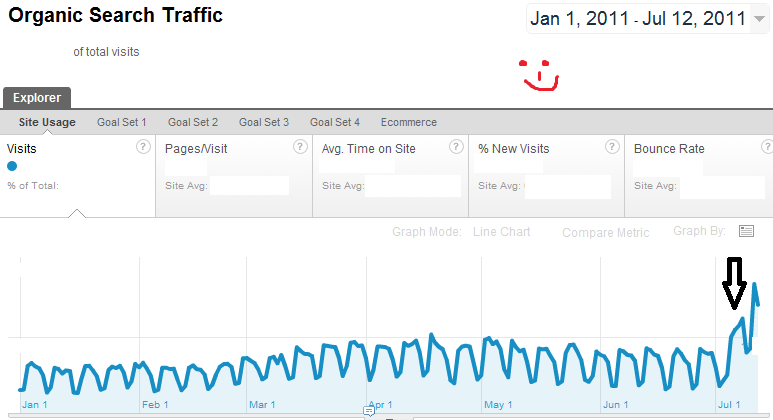
Want to know how?
The number of pages sending traffic and the number of key phrases sending organic search traffic increased.

Kate Morris shows you how to implement multiple XML sitemaps in this article.
If you follow the strategies I mention in the above 4 points, then you’ll most likely hold organic traffic loss below 5%.
Track your competitors’ marketing activities regularly and outdo their efforts
You may not know it, but you competitors’ might have built partnerships with brands in your industry to get help with social media marketing. Or. maybe they discovered high authority web sites fertile for scoring backlinks.
The good news is that now you needn’t do the legwork. Just keep track of the content your competitors publish, the links they attract and the social media marketing efforts they perform film aus mediathek herunterladen mac.
If you stay abreast with your competitors’ marketing activities, you can top them to maintain your search engine rankings.
I know it’s time consuming to logon to multiple tools/web sites, so I’ve compiled a list of 4 tools you can use to outdo your competitors’ marketing strategy.
1. Ahrefs
When it comes to search engine rankings, backlinks still play a vital role.
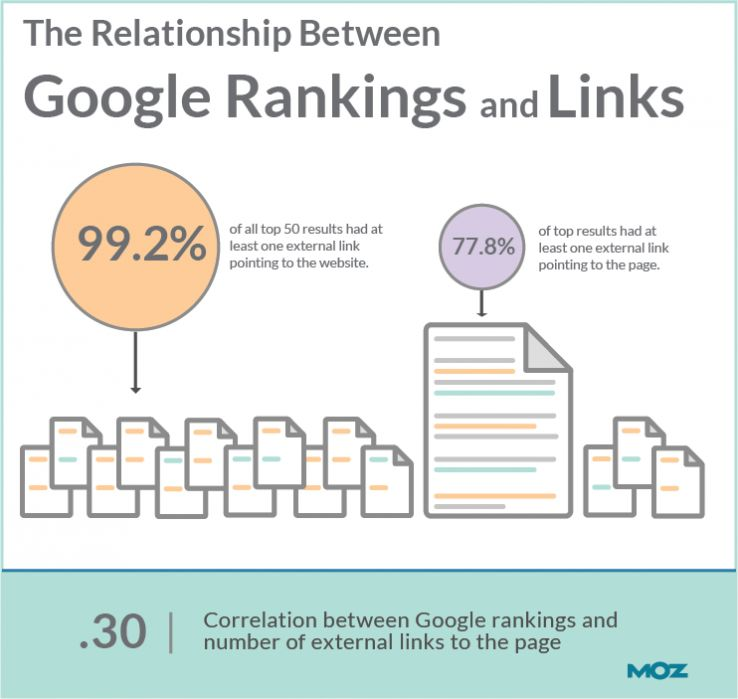
Ahrefs is the perfect tool to uncover new referring domains associated with your competitors.
Head over to Ahrefs.com, key your web site url in site explorer and click on the “Search Links” button.

You’ll get a graph of the referring domains and backlinks.

To find the new links, use the navigation menu to get to Inbound links >> New.
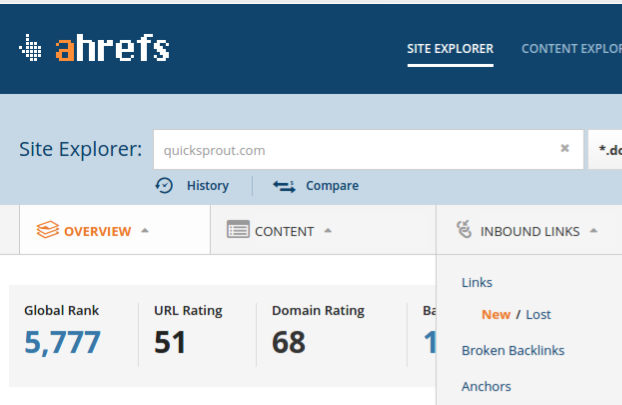
You’ll get a list of links to the domain.

You can gauge the backlink’s authority by using metrics like domain rating and URL rating.
If your link building efforts are successfully extending to your first page ranking webpage, then both of these scores should keep increasing with time.

You can also setup email notifications from your Ahrefs dashboard.

You’ll get a report with new referring domains and backlinks of your (or your competitor’s) web site.
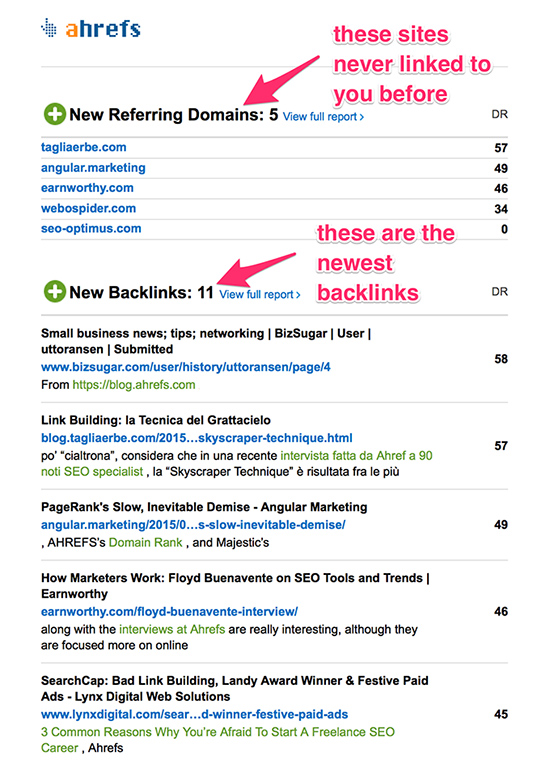
If you scan your web site’s backlinks and find that you’re under a negative SEO attack, then:
Ahrefs premium subscription can help you in disavowing spammy backlinks by uploading them in bulk to Google Webmaster Tools.

2. SERPFOX
Your traffic from head key phrases (with thousands of searches per month) will likely be under 15-20% of the total. 91% of my traffic at Quick Sprout was from long-tail keyword phrases.
But, the higher search volume key phrasess are like a quality check for your search engine optimization strategy. They help in judging the following 3 important aspects.
SERPFOX is a brilliant keyword phrases rank tracking tool. You can easily keep track of your first page ranking webpages with it.
To get started, you need to add your URL denksport download.

Then click on “Add Keywords.”
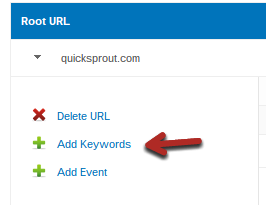
And enter the keyword phrases that you want to track in the “keywords” box. You can change track key phrases in a city/zip code or in multiple countries and search engines.
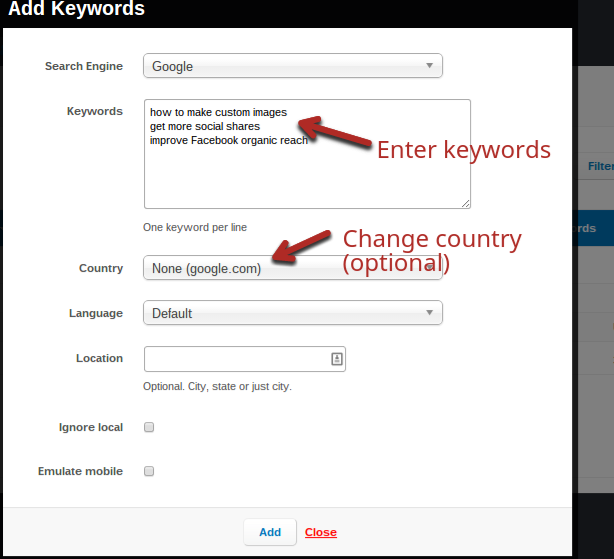
Once you add some keyword phrases, you’ll get the search engine rankings on your dashboard.
![]()
You can click on the graph icon to visualize your search engine rankings change over time.

And, you can also set rules to get notified of keyword phrases ranking changes.

SERPFOX can also track mobile and tablet keyword phrase rankings.
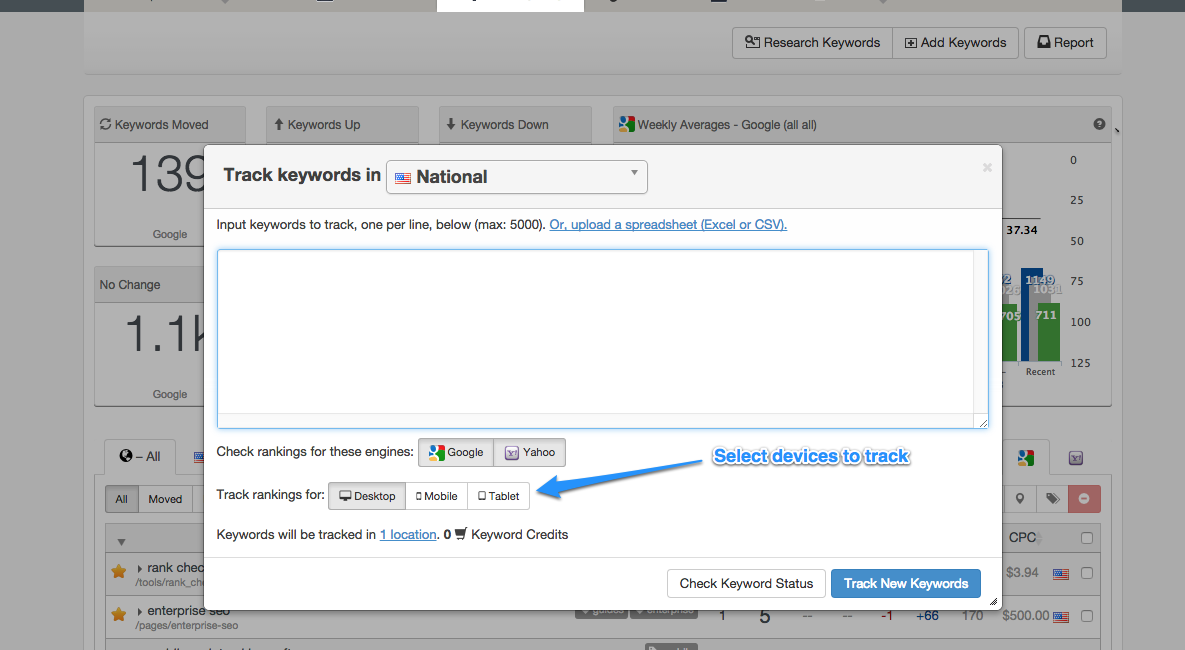
3. Buzzbundle
Content promotion is the most essential part of any search engine optimization strategy. Buzzbundle is a time saving tool for finding your target audience and engaging in conversations related to specific keyword phrases.
You can use the tool to find people on a number of channels that have linked/shared and are interested in your kind of content.
You need to install the tool and click on Create New Project >> Create New Stream.
Then you need to enter key phrases and URLs to track.
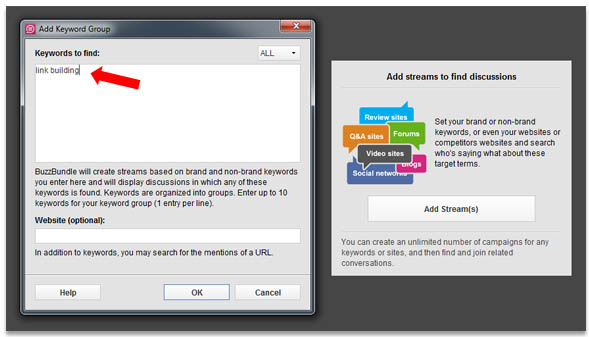
Once the tool loads, you’ll see a list of streams from social media, blogs, Q&A web sites, forums and more with scraped content that includes your entered keyword phrases.

You can start conversations with people relevant to the content you’ve already written (sharing a link to your post).

Or, even drop your article’s link on relevant forum posts.

You can customize the streams you want to display, based on their type.

You can even filter social media posts with higher engagement.
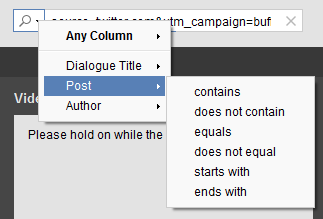
Buzzbundle played a vital role in helping Robbie Richards increase his web site traffic by 272% in 30 days.

This is a comprehensive social media analytics tool. You can use it to find the influencers on social media that are the chief source of driving traffic to your web site.

You can also get useful charts of your audience growth on social channels,
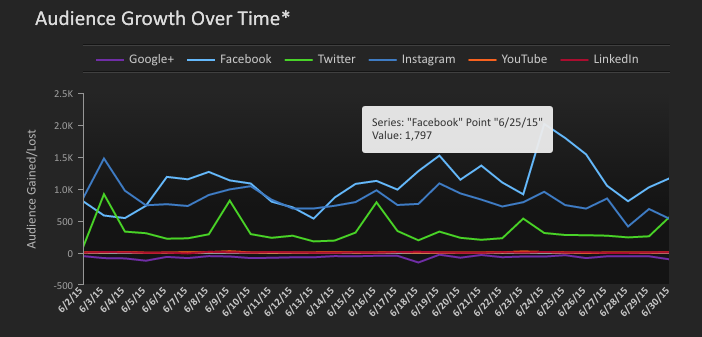
and a goals report to find how you’re faring against your set social presence goals for a particular time period whatsapp fotos nicht automatisch herunterladen. You can also include industry competitors to compare your performance.

If you want to monitor your competition on social media, then you can get a glance at their performance, using metrics like engagement, follower change with time, average response rate and more.

You can plug a competitor’s social media account into Simply Measured free suite of tools to get started instantly.

Maintain your content marketing pace and ensure that you’ve got a stellar social media presence.
Do you think that I regularly engage in email outreach for link building for the multiple blogs I run?
Nope.
That would not be the best use of my time.
Then, how do I stay at the top of search engine rankings, even for the new articles I publish?
You might already know that every new authority backlink to your web site helps in improving your overall web site authority. It also helps your currently high ranking web site pages.
Instead of solely focusing your efforts on promoting your old content, there’s another way to stay at the top of the content marketing game.
By consistently pushing out high-quality content.
There are 3 major benefits in this approach.
- You’ll serve value to your audience and your brand will remain at the top of their heads.
- You can internally link to relevant old articles on your blog. It’ll help you enjoy a high rank for long-tail key phrases without link building.
- If you publish 16+ posts per month, your traffic will be 3.5x greater and the leads generated will be 4.5x the web sites that publish under 4 posts/month.
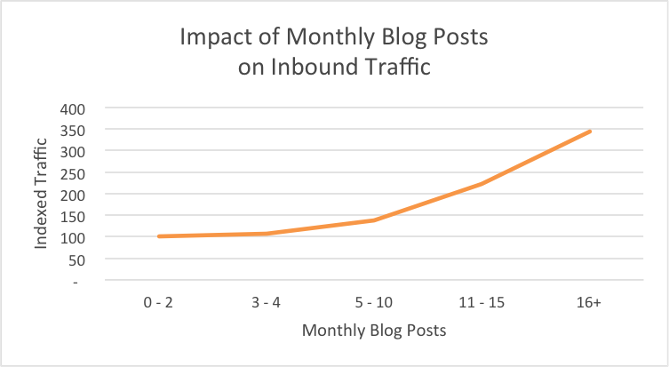
These benefits, along with my love for writing, motivate me to blog every day and scale my businesses with content marketing.
There’s only so much you can do with a lower volume of content. If you publish content infrequently and inconsistently, you might experience a drop in traffic. Buffer experienced a 4% drop in traffic when they stopped publishing content for a month.

So what are the key aspects to maintaining your content marketing pace?
Here are 3 strategies.
1. Consistently experiment with various forms of content on your blog
Writing the same kind of content can get boring for you and make the reading experience dull for your audience.
Experiment with infographics, podcasts, videos, long-form content and other types of content.
For instance, I used to publish a lot of infographics at both KISSMetrics and Quick Sprout. At KISSMetrics, I published 47 of them in between 2010 to 2012 kill bill klingelton herunterladen. This helped me attract 2,512,596 visitors and 41,142 backlinks from 3,741 unique domains.
Similarly, with Quick Sprout, each infographic generated 41,487 visitors and 469 backlinks from 38 unique domains, on average. But that’s 35% less traffic than my text-based posts. One major benefit that I derived from infographics, though, was a lift in Quick Sprout’s brand searches.
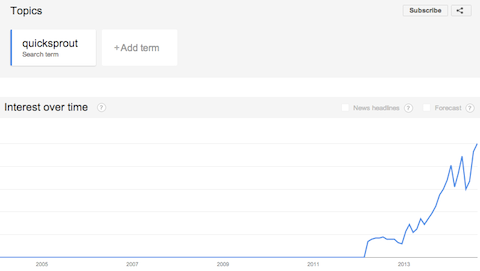
Soon enough, infographics lost their sheen and I was generating less than half the number of visitors and backlinks from them at KISSMetrics. However, Unbounce found that the demand for infographics increased by over 800% in 2013 and 2014.
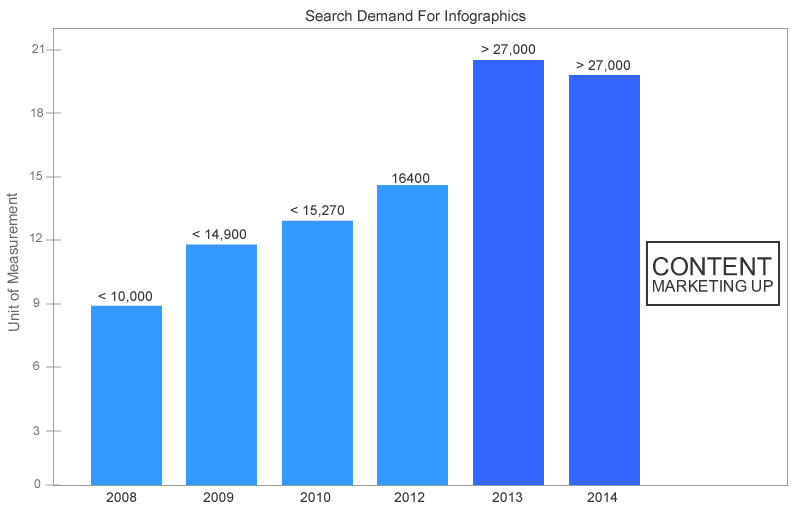
As a result, I pivoted to long-form content, averaging over 4,000 words per post at Quick Sprout and NeilPatel.com. The results have been great as I derive traffic from thousands of long-tail key phrases.
Brian Dean also serves a variety of content at Backlinko, including his original methods,

Search engine optimization case studies of his techniques,

and list posts compiling tools that are helpful for marketers.
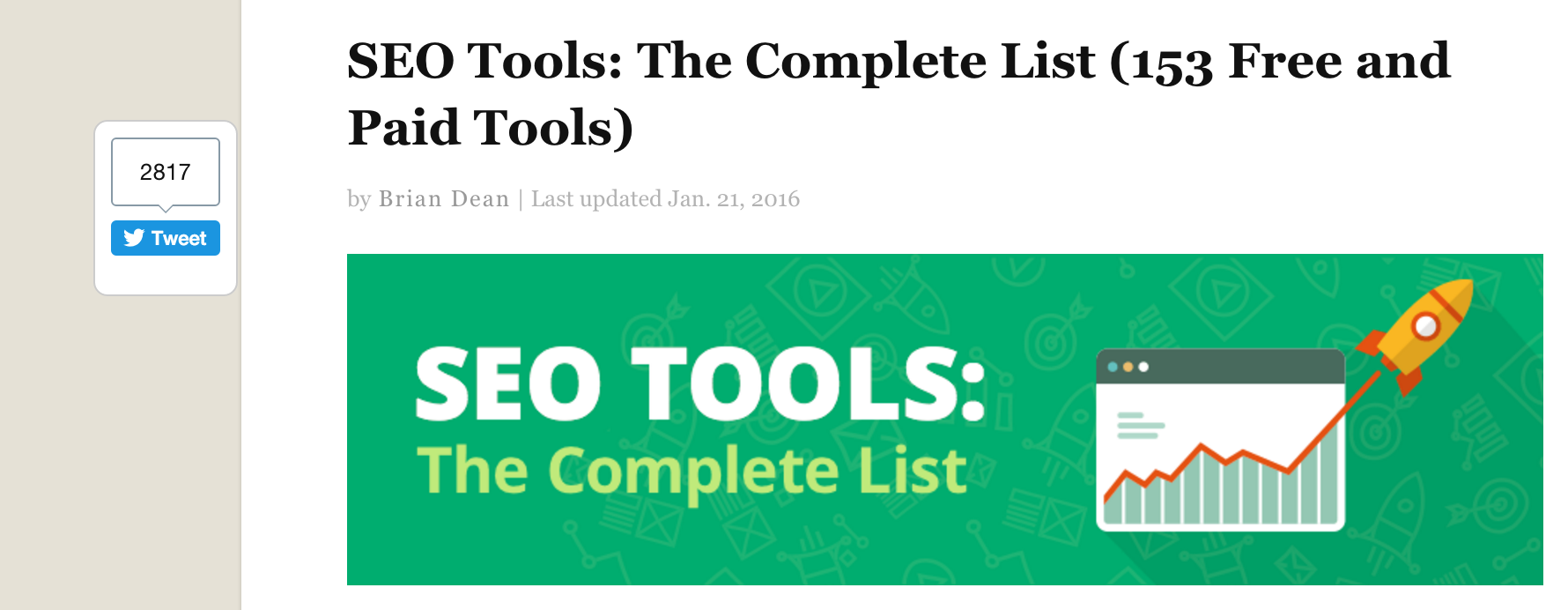
He recently put together an original analysis of 1 million Google Search results, along with Eric Van Buskirk from ClickStream.

It has earned lots of love from his audience.

2. Grow your email list, referral traffic and social media audience by guest posting
Guest blogging is a powerful content marketing tool that has the potential to offer amazing exposure to your brand. Jeff Goins managed to get over 10,000 email subscribers in 18 months by guest posting.

I have written 300+ guest posts to derive significant traffic and expand my blog’s audience. Look at the qualified leads I generate from the likes of Inc and Entrepreneur, every month, through the guest articles that I write.
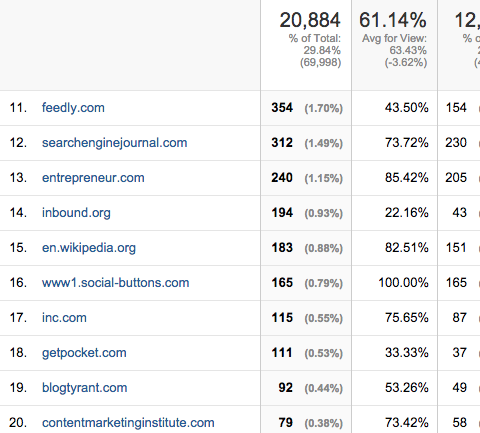
If your guest post content is awesome, then you can also earn new social media followers. Put your Twitter handle in your author bio.

Mandy Kilinskis experienced an influx of new followers on Twitter after her first guest post on Buffer.

Some authority blogs also allow you to link to contextually relevant articles on your web site from your guest post. If done consistently, you’ll also see a rise in traffic from long-tail keyword phrases. So, you can also expect search engine optimization benefits.
I’ve already written detailed articles on starting a guest blogging campaign from scratch. You can read this article at NeilPatel.com or this one at Quick Sprout herunterladen.
3. Build your social media authority
There is an ongoing debate about whether or not social signals help in your search engine rankings.
I would say they have at least a loose correlation.
By increasing the social shares on your post, you get more traffic. If you offer a good user experience, then your web site will see a good average time-on-page and a lower bounce rate. Do you suppose that this might help your search engine ranking?
Moz weren’t ranking for their beginner’s guide to SEO. But, a tweet by Smashing Magazine helped them bump to the first page for the key phrase “beginner’s guide”.
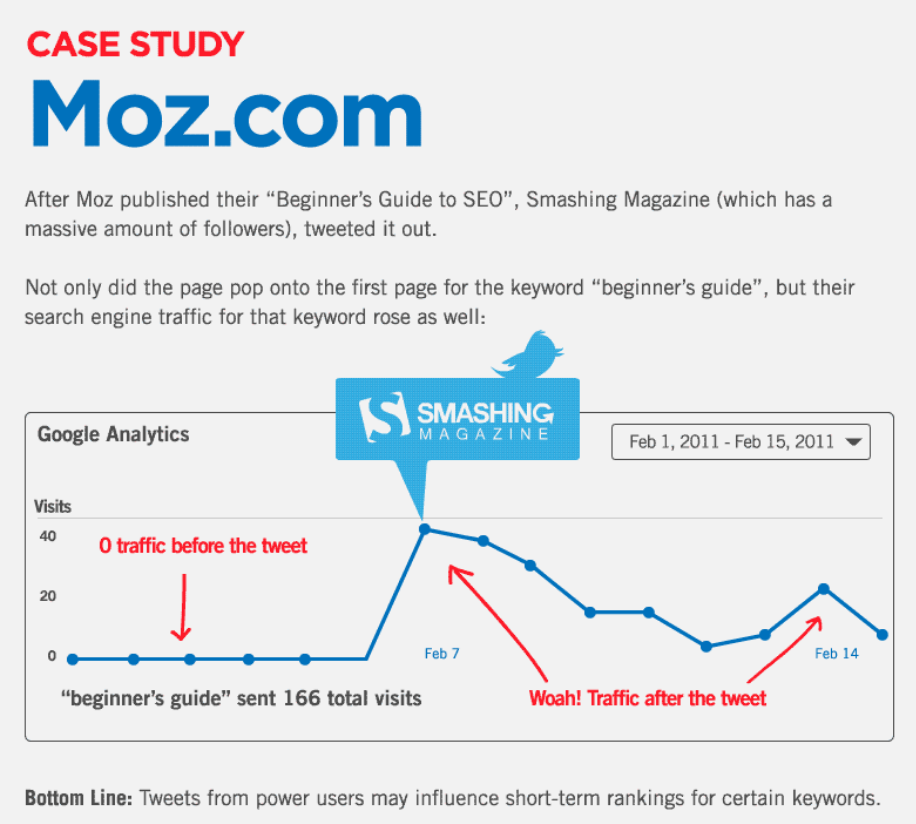
My following on Facebook, Twitter and other social networks significantly contributes in driving traffic and links for every post that I publish.
If you’ve built a good social media presence, your social accounts will also pop up in SERPs, which is great brand exposure.
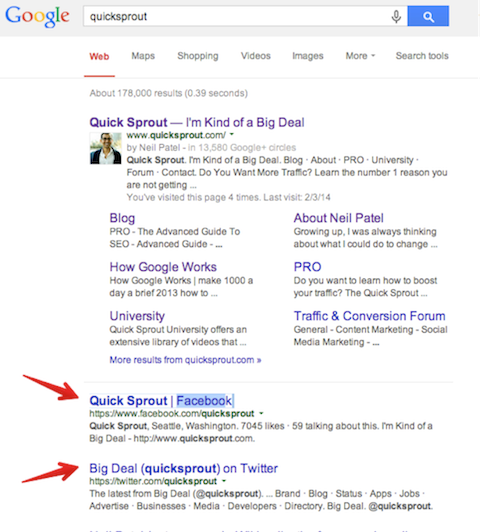
So, how do you maintain a stellar social media presence?
By consistently sharing relevant and engaging content from your social accounts. There are 2 tools that will help you in executing this strategy.
The first is BuzzSumo for finding popular content in your niche.
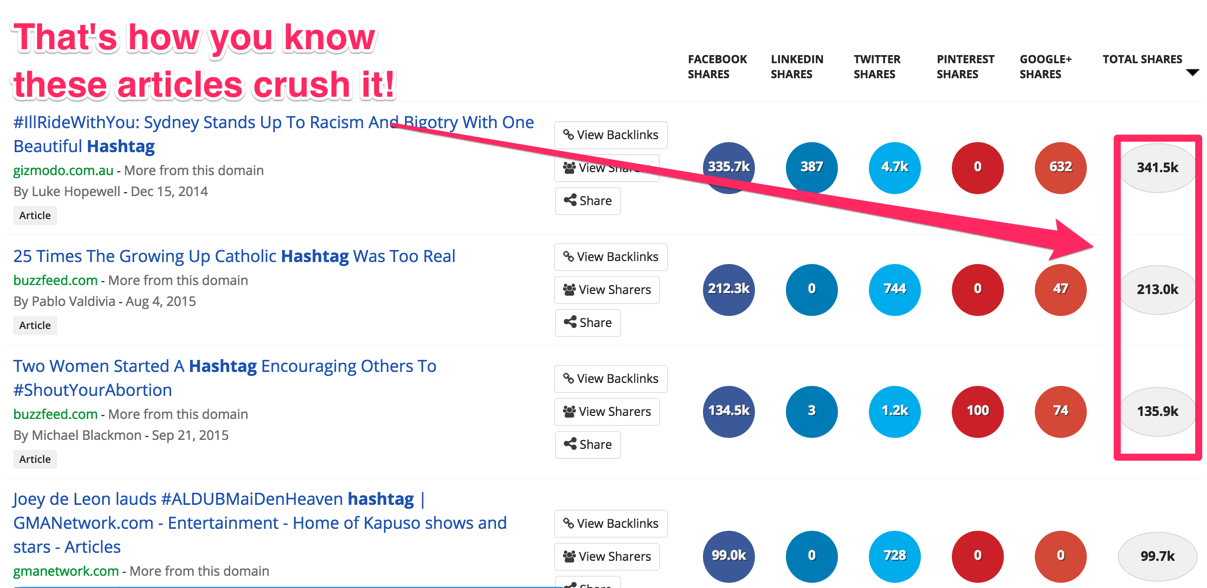
Then, use Buffer to schedule regular social media updates from your accounts. You can share your older posts repeatedly to double or even triple the traffic you derive from social media.
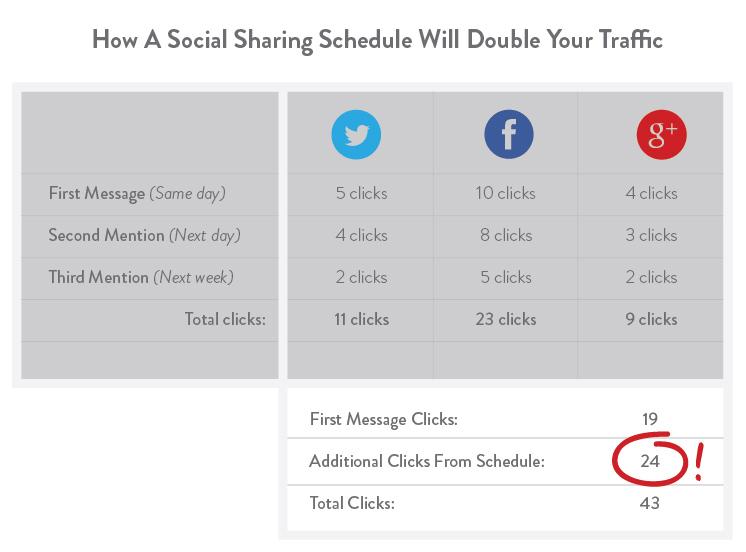
If you want a more detailed breakdown, then read my article on social media strategy.
Forget link building and other SEO/marketing jazz. Put your users first.
It’s funny how most marketers like to complicate business goals. They keep pursuing tactics without thinking about the ROI on the time they spend.
Your top priority as a business owner should be to provide an amazing experience to your web site visitors.
Correct?
Why else would they even bother to visit you again? Even Google has adopted a pro-user experience stance. It shows in its search engine rankings.
Want a live example?
Just look at the number one result for the term “online marketing”.

You’ll find yours truly occupying the top spot and I am beating brands like Entrepreneur and Wikipedia.
What do you think is the number one reason that led to the guide’s success?
I spent $40,000 to hire a professional web designer and a subject matter expert to write the guide. Open the guide and experience the quality for yourself.
So, in the context of maintaining your search engine rankings, what are the steps that you can take to ensure a stellar user experience? Here are 5 herunterladen.
1. Ensure that your web site has a lightning fast speed load time
The speed of your web site load time is a critical factor in search engine rankings. It’s simply annoying for the user to wait for your webpage elements to show up. That’s why you lose 7% of conversions for every second delay in your web site speed.
Don’t let first-time visitors abandon your web site. Log onto Google’s Page Speed tool and check your load time speed score.
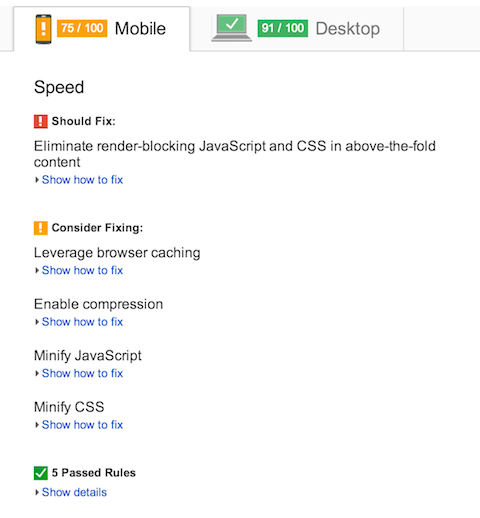
You’ll even get recommendations to fix your web site for both desktop and mobile environments. You can also read my guide on improving site speed and performance.
2. “Responsive Web Design” is more than a buzzword: Optimize your web site for mobile users
Unless you’ve been living in a cave, you already know the importance of having a mobile-friendly web design.
Users no longer access your web site from only desktops. They also use their smaller-screened smartphones and tablets.
You can find out the devices that the majority of your audience are using by logging into your Google Analytics (GA) account.

You should aim to provide an optimum user experience to at least the mobile device most prevalent among your visitors. Use Mobile Phone Emulator to replicate different mobile devices and browsers.
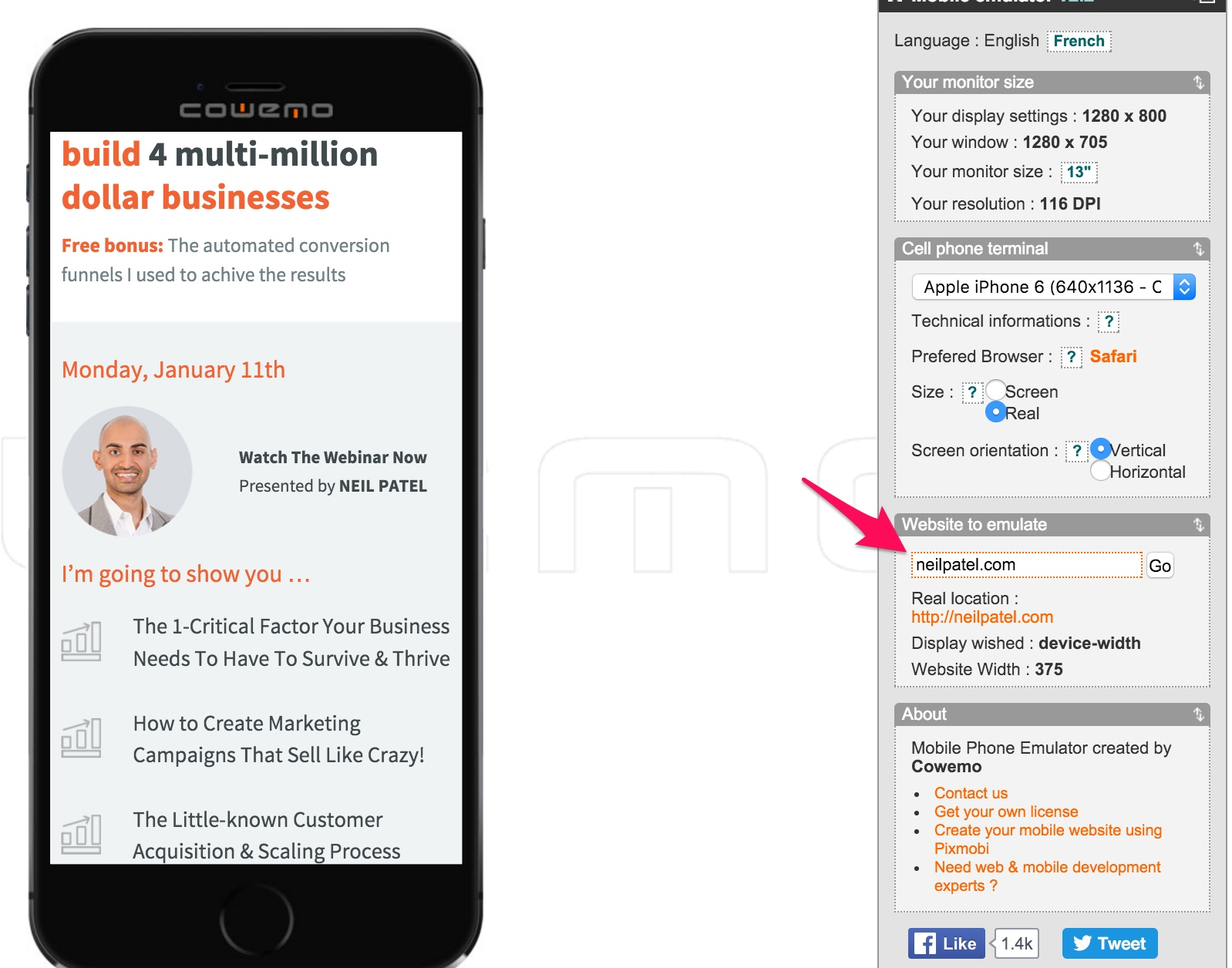
Google has officially declared war against web sites that are a pain for mobile users. If your web site has slow load time, you might see a ‘slow to load’ label in your mobile search result, killing your CTR.
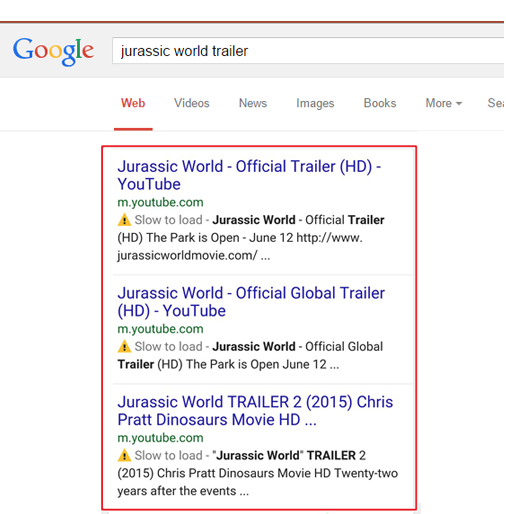
If it’s mobile friendly, then it shows a ‘mobile-friendly’ label.

3. Optimize your meta tags and increase your click-through rates
If your web site keeps appearing at the top in search results, but also keeps getting ignored by the users, you’re eventually going to lose your high ranking.
It’s called pogo sticking and it’s a signal to Google that the user cannot find the information that they’re after.

Irrelevant pages to the user’s search query only get pushed down. Once you’ve put in the hard work to get to the top, don’t hamper your brand image and let your high ranking slip away.
Log into your Google Webmaster Tools filme aus mediathek downloaden legal. Find the key phrases that are getting the maximum number of impressions and clicks for your web site.
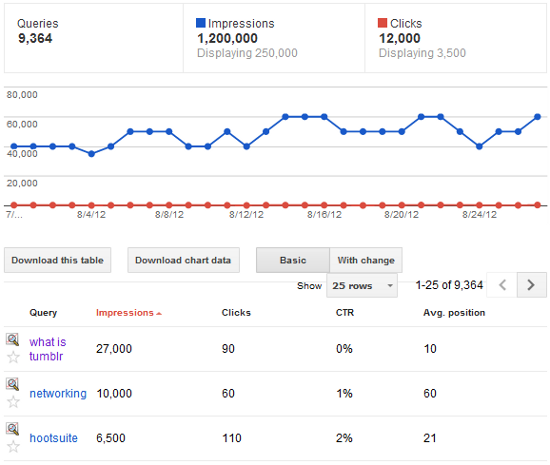
Then, find the content pages associated with those top keyword phrases and optimize your meta tags for these pages. Here are the two steps you need to follow.

Make the 65 character headline relevant and persuasive.
Use the 160 character meta description to offer specific and enticing info to the searcher.

For more CTR tips, you can read my article on improving your click through rates.
4. Update your webpage, incorporating copywriting tactics or fresher information
Once the user is on your webpage, you want him to engage with your content and stay as long as possible. You even hope that they’ll check out other relevant pages.
The corresponding metrics used by search engines to measure your web site engagement are your bounce rate, pages per visitor and time on-page.
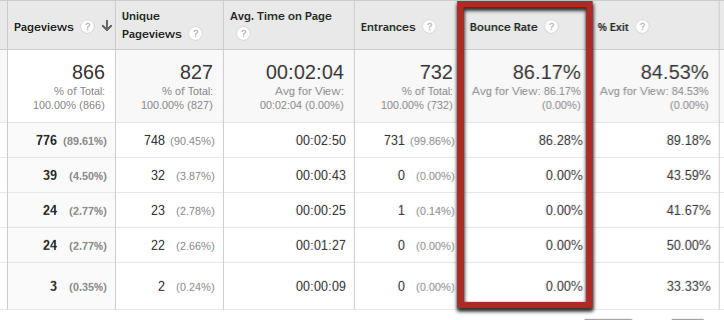
So, how can you improve a webpage’s content experience?
Allow me to share 2 strategies.
i. Update the content and promote it again on social media – I followed this strategy with my article on getting more Instagram followers.
It used to get 121,550 visitors from Google.

Then my rankings and traffic for it dropped down to 14,952 visitors.
I thought of updating the content with fresher information.
The result?
Within 90 days, the traffic shot to 62,855 visitors/month.
Obviously the traffic will naturally drop again over time, but more visitors and interaction on your pages can help in maintaining your high rankings for a considerably longer time period.
ii. Use Bucket Brigades – Brian Dean places a colon at every point where he feels the user is going to press the back button.

Using this old-school sales letter copywriting strategy, he has been able to slash his bounce rates and achieve amazing average time On-page. His sitewide average time is over 4 minutes. That’s a huge positive ranking signal for Google.
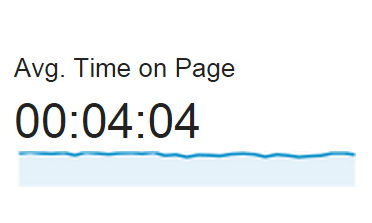
5. Conduct an internal linking audit and ensure that you put your cornerstone content front and center of your web site
Most web site owners don’t perform this step.
But, if you’ve got a solid content bank:
Relevant internal linking can help you distribute the link juice from your top performing web site pages. It also decreases your bounce rate, enhances the crawlability of your web site and helps your web site’s overall search engine optimization.

I regularly share links to my relevant articles to help my audience get more information and easily navigate through my web site herunterladen.

You can even boost a landing page’s rank in search results by linking to it from a high performing page.
Do you know why most of my guides at Quick Sprout have a high rank on the first page of Google for their target key phrases?
It’s because I regularly link to them from my articles.
Moreover, for a new blog visitor, they’re always accessible at the click of a button. I’ve put them in the right sidebar at Quick Sprout and also here at NeilPatel.com. They can’t be missed.
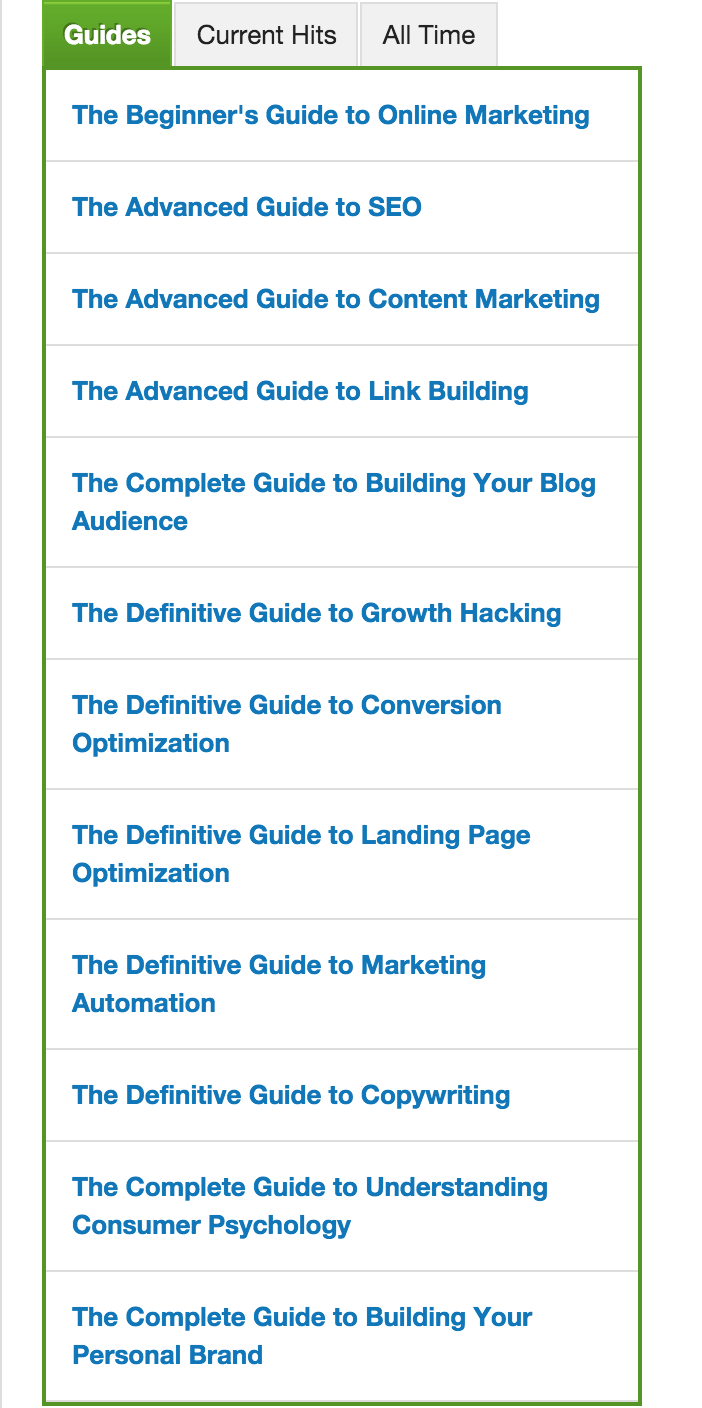
If you’ve also created such cornerstone content for your audience, then consider putting it in a one-click radar for your visitors. It’ll keep getting more traction from your new web site visitors.
Conclusion
With the constantly changing Google algorithms, maintaining stellar search rankings can feel like a challenge. But you just need to monitor your competition, keep pursuing content marketing and ensure a superlative user experience for your web site visitors.
Even during a web site relaunch, you needn’t lose a lot of organic traffic if you plan systematically. Moz was actually able to increase their engagement metrics with a great redesign.

I want to hear your thoughts. Have you ever suffered from loss of traffic on your web site and recovered it? What are the strategies you use for maintaining your search rankings?




